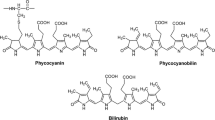Abstract
Diabetes mellitus (DM), a metabolic disorder, is the causes of oxidative stress leading to complications in micro- and macro-vascular system. The present study investigated sophocarpine for anti-diabetic potential in vivo in mice model. Sophocarpine administration to diabetic mice significantly (p < 0.05) attenuated glucose content in the plasma. The diabetes mediated lowering of GSH, ceruloplasmin and vitamin E was prevented in mice plasma by sophocarpine administration. Sophocarpine significantly (p < 0.05) reversed diabetes mediated suppression of insulin level and total Hb content in the mice plasma. In sophocarpine administrated diabetic mice C-peptide level was elevated and glycosylated hemoglobin content was suppressed significantly (p < 0.05) relative to diabetic group. Administration of sophocarpine significantly (p < 0.05) repressed diabetes mediated increase in TG and TC levels in dose-based manner. Administration of sophocarpine exhibited preventive role against diabetes mediated pathological damage to pancreas in the mice. Sophocarpine administration to diabetic mice repressed PPARγ recruitment significantly (p < 0.05) in dose-dependent manner. Sophocarpine prevents oxidative stress mediated pancreatic damage through increase in vitamin E, GSH and C-peptide levels, Moreover, the PPARγ activity was down-regulated, LDL-c content lowered and HDL-c level elevated in diabetic mice by sophocarpine. Therefore, sophocarpine may be developed for treatment of diabetes, however, further in vivo studies need to confirm the same.



Similar content being viewed by others
REFERENCES
Dai, LyL., Xu, S., Choi, S.K., et al., Oxidative stress and calcium dysregulation by palmitate in type 2 diabetes, Exp. Mol. Med., 2018, vol. 49, no. 2. e291.
Freund, P., Wolff, H.P., and Kuhnle, H.F:, (−)-BM 13.0913: a new oral antidiabetic agent that improves insulin sensitivity in animal models of type II (non-insulin-dependent) diabetes mellitus, Metabolism, 1995, vol. 44, pp. 570–576.
Mans, K. and Aburjai, T., Accessing the hypoglycemic effects of seed extract from celery (Apium graveolens) in alloxan-induced diabetic rats, J. Pharm. Res. Int., 2019, vol. 26, pp. 1–10.
Fernandez-Alvarez, J., Barbera, A., Nadal, B., et al., Stable and functional regeneration of pancreatic beta-cell population in nSTZ-rats treated with tungstate, Diabetologia, 2004, vol. 47, pp. 470–477.
Anwar, M.M. and Meki, A.R., Oxidative stress in streptozotocin-induced diabetic rats: effects of garlic oil and melatonin, Comp. Biochem. Physiol., A: Mol. Integr. Physiol., 2003, no. 135, pp. 539–47.
Houseknecht, K.L., Cole, B.M., and Steele, P.J., Peroxisome proliferator-activated receptor gamma (PPAR gamma) and its ligands: a review, Domest. Anim. Endocrinol., 2002, vol. 22, pp. 1–23.
Sharma, A.M. and Staels, B., Review: peroxisome proliferator-activated receptor gamma and adipose tissue—understanding obesity-related changes in regulation of lipid and glucose metabolism, J. Clin. Endocrinol. Metab., 2007, vol. 92, pp. 386–395.
Gao, Y., Jiang, W., Dong, C., Li, C., Fu, X., Min, L., et al., Anti-inflammatory effects of sophocarpine in LPS-induced RAW 264.7 cells via NF-kB and MAPKs signaling pathways, Toxicol. In Vitro, 2012, vol. 26, pp. 1–6.
Qian, H., Shi, J., Fan, T.T., Lv, J., Chen, S.W., Song, C.Y., et al., Sophocarpine attenuates liver fibrosis by inhibiting the tlr4 signaling pathway in rats, World J. Gastroenterol., 2014, vol. 20, pp. 1822–1832.
Sheu, W., Jeng, C.Y., Fuh, M., Chen, Y.D., and Reaven, G.M., Resistance to insulin-mediated glucose disposal in patients with noninsulin-dependent diabetes mellitus in the absence of obesity or microalbuminuria—a clinical research center study, J. Clin. Endocrinol. Metab., 1996, vol. 81, pp. 1156–1159.
Khan, A., Safdar, M., Ali, KhanM.M., Khattak, K.N., and Anderson, R.A., Cinnamon improves glucose and lipids of people with type 2 diabetes, Diabetes Care, 2003, vol. 26, pp. 3215–3218.
De Bem, G.F., Costa, C.A., Santos, I.B., et al., Antidiabetic effect of Euterpe oleracea Mart. (açai) extract and exercise training on high-fat diet and streptozotocin-induced diabetic rats: a positive interaction, PLoS One, 2018, vol. 13, no. 6. e0199207.
Garfinkel, A.S., Nilsson-Ehle, P., and Schotz, M.C., Regulation of lipoprotein lipase: induction by insulin, Biochim. Biophys. Acta, 2016, vol. 424, pp. 264–273.
Wahren, J., Ekberg, K., Samnegard, B., and Johansson, B.L., C-peptide: a new potential in the treatment of diabetic nephropathy, Curr. Diabetes Rep., 2011, vol. 1, pp. 261–266.
Chiang, C.K., Ho, T.I., Peng, Y.S., et al., Rosiglitazone in diabetes control in hemodialysis patients with and without viral hepatitis infection: effectiveness and side effects, Diabetes Care, 2007, vol. 30, pp. 3–7.
Author information
Authors and Affiliations
Corresponding author
Ethics declarations
The authors declare that they have no conflict of interest.
COMPLIANCE WITH ETHICAL STANDARDS
Statement on the welfare of animals. Approval for present study was obtained from the Ethics Committees of the Zhengzhou University and experiments were conducted according to guidelines of the National Institutes of Health (4th edition, 2008).
AUTHOR CONTRIBUTIONS
Xiaoqian Su and Wei Miao are co-first authors of the article.
Rights and permissions
About this article
Cite this article
Su, X., Miao, W., Li, L. et al. Inhibition of Type-2 Diabetes Mellitus Development by Sophocarpine through Targeting PPARy-Regulated Gene Expression. Dokl Biochem Biophys 497, 137–143 (2021). https://doi.org/10.1134/S1607672921020150
Received:
Revised:
Accepted:
Published:
Issue Date:
DOI: https://doi.org/10.1134/S1607672921020150




